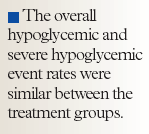- Safety & Recalls
- Regulatory Updates
- Drug Coverage
- COPD
- Cardiovascular
- Obstetrics-Gynecology & Women's Health
- Ophthalmology
- Clinical Pharmacology
- Pediatrics
- Urology
- Pharmacy
- Idiopathic Pulmonary Fibrosis
- Diabetes and Endocrinology
- Allergy, Immunology, and ENT
- Musculoskeletal/Rheumatology
- Respiratory
- Psychiatry and Behavioral Health
- Dermatology
- Oncology
From the 67th annual scientific sessions of the American Diabetes Association: Pulmonary effects of inhaled insulin are small, reversible
Investigators have demonstrated that patients with type 2 diabetes who use inhaled insulin as part of their basalbolus insulin regimen experience a small decline in pulmonary function.

Key Points

In addition, patients with type 2 diabetes who are treated with inhaled insulin plus long- or intermediate-acting insulin can achieve long-term levels of sustained glycemic control that are similar to those achieved with subcutaneous (SC) insulin therapy, said William T. Cefalu, MD, chief, Division of Nutrition and Chronic Diseases, Louisiana State University, Baton Rouge.
In this open-label study, 627 patients with type 2 diabetes who were being treated with SC insulin at baseline were randomized to inhaled insulin (n=316) or continued SC insulin (n=311) for 2 years. All patients then returned to treatment with SC insulin for 6 months, after which time they returned to their randomized therapy for 6 months.
Patients who were randomized to inhaled insulin experienced an early, minor (mean: <0.1 L) reduction in forced expiratory volume in 1 second (FEV1) compared with patients who continuously received SC insulin. The difference in FEV1 between the groups resolved within 1 month of discontinuation of inhaled insulin. Upon reinstitution of inhaled insulin, the reduction in FEV1 was of the same magnitude as the initial decline.
"The pattern of change is consistent with a physiologic, not pathologic, effect of inhaled insulin on lung function," Dr Cefalu said.
Median baseline HbA1c levels were 7.7% in both groups. After 3 years, patients in both groups had median baseline HbA1c levels of approximately 7.4%. "Cessation and resumption of inhaled insulin therapy does not have any detrimental impact on its long-term efficacy," Dr Cefalu said.
Despite the comparable blood glucose control, the patients randomized to inhaled insulin gained less weight over the 3-year period than the patients assigned to SC insulin (3.5 vs 4.1 kg, respectively).

Cough and shortness of breath were more common among patients randomized to inhaled insulin. The cough was mostly mild, started shortly after initiation, decreased over time, and rarely resulted in discontinuation, Dr Cefalu said.
Insulin antibody levels declined after discontinuation of inhaled insulin. Subsequent readministration resulted in an insulin antibody response comparable to that observed after the original initiation of inhaled insulin.
Dr Cefalu said a spirogram should be performed before treatment with inhaled insulin is started to ensure adequate pulmonary function. He also said that patients who stop smoking should wait for approximately 6 months before using inhaled insulin.
A separate study of 580 patients with type 1 diabetes used the same methodology and end points as this study and produced similar results with respect to lung function, glycemic control, weight gain, adverse events, and hypoglycemic event rates.
